Understanding Grinding Discs for Concrete
Grinding discs for concrete are specialized tools designed for the abrasive tasks of grinding and polishing concrete and other robust materials. Available in various grit sizes and bond types, these discs cater to a range of applications, from smoothing uneven surfaces to stripping coatings and thin-set in construction and refurbishment projects. They are indispensable for professionals in the construction and concrete sectors who demand precision and efficiency in concrete handling.
Grinding discs operate on a principle akin to sandpaper, wearing down materials to refine the surface. Unlike sandpaper, which is manually used on small sections, grinding discs are mounted on power tools like angle grinders or floor polishers, enabling quicker and more extensive area coverage. The disc's abrasive effectiveness is gauged by its grit—a measure of the abrasive particles' coarseness or fineness.
Constructed from materials such as diamond, silicon carbide, and aluminum oxide, grinding discs are selected for their hardness and task-specific performance. Diamond grinding discs, for example, are exceptionally suited for concrete cutting and polishing due to their unparalleled hardness, whereas silicon carbide discs are more apt for masonry. The bond between the abrasive grains and the disc's substrate is also vital, influencing the disc's efficacy and longevity.
Varieties of Grinding Discs for Concrete
The array of grinding discs for concrete is extensive, with each variant tailored for distinct purposes. Examples include:
-
Diamond Polished Pads are employed for the wet polishing of concrete to a mirror-like sheen. Typically used with floor polishers or grinders, these pads contain embedded diamonds that reveal finer abrasives as they wear down.
-
Resin Pads offer a gentler solution than diamond pads and are versatile for both grinding and polishing. These pads can be utilized dry or with minimal water to achieve the desired finish on concrete floors.
-
Buffing Pads are designed for both mechanical and manual polishing of concrete. Available in various grits, they can be fitted to diverse tools such as hand polishers or floor machines.
-
Grinding Stones are paired with concrete grinders to sculpt surfaces, adeptly tackling high spots, swiftly removing them, and prepping the concrete for further grinding or polishing.
Each disc type boasts unique characteristics that render it suitable for tasks ranging from aggressive stock removal to detailed polishing. When choosing a disc, it's crucial to consider the concrete's hardness and the desired finish.
Selecting the Right Grinding Disc for Concrete
Choosing the appropriate grinding disc is paramount for professional concrete work. Key considerations when selecting a disc include:
-
Disc Purpose: Ascertain the primary use of the disc—be it for concrete polishing, metal deburring, or coating removal. This will direct you to the suitable disc type.
-
Disc Size and Grit: Match the disc size to the scope of the job. Smaller discs are better for precision work, while larger ones expedite coverage.The grit indicates the abrasiveness; lower numbers signify coarser particles, and higher numbers finer abrasion.
-
Bond Type: The bond secures the abrasive grains together. Options range from ceramic to resin and rubber, each with distinct attributes for different uses.
-
Shape and Hole Pattern: The disc's shape should match the workpiece's contours for optimal engagement. The hole pattern is crucial for dust control during dry grinding.
By weighing these factors against your project's specific demands—whether equipping a construction firm or a manufacturing facility—you can make an informed grinding disc selection.
Exploring Grinding Discs for Concrete on Alibaba.com
Alibaba.com serves as a global nexus for buyers and suppliers, offering a broad spectrum of products for diverse industries, including construction. For sourcing dependable grinding discs for concrete, Alibaba.com is an invaluable tool. The platform's extensive selection enables businesses to find products that align with their precise needs, from general-purpose to industry-specific solutions.
The variety of suppliers on Alibaba.com means businesses can locate products with attributes like enhanced durability or specialized bonding agents for rigorous tasks. Moreover, with customization options such as OEM and ODM services, companies can acquire products that conform to their exact requirements. Such customization is especially useful for complex equipment like grinding discs, where slight variations can significantly affect performance.
Utilizing Alibaba.com's comprehensive offerings, including Trade Assurance for protected transactions and streamlined order processing, businesses can confidently acquire their grinding discs. Whether provisioning a sizable construction crew or stocking products for resale, Alibaba.com's dedication to smooth international commerce positions it as the go-to source for premium abrasive tools.
Frequently Asked Questions About Grinding Discs for Concrete
What are the primary uses of grinding discs for concrete?
Grinding discs are chiefly employed for leveling, refining, and mending concrete surfaces. Compatible with various grinders, they are pivotal for tasks like adhesive removal, laitance elimination, or excess material clearance, and are essential for concrete restoration and finishing endeavors.
How should I select the appropriate grit size for a grinding disc?
Grit size selection hinges on the material at hand. Coarser grits are apt for material subtraction, while finer grits are tailored for polishing and final touches. The intended disc application should guide the grit choice.
Can grinding discs be utilized for both cutting and grinding?
Indeed, certain grinding discs, such as those with diamond edges, are versatile for both cutting and grinding. Nonetheless, it's imperative to choose a disc compatible with the material for optimal efficiency and lifespan.
Which grinding disc is recommended for heavy-duty industrial use?
For demanding industrial applications, abrasive grinding discs or those crafted from high-grade materials like diamond are advised. These discs boast exceptional durability and are engineered to withstand intensive usage.
Are grinding discs available in different shapes for various tasks?
Absolutely, grinding discs are offered in shapes including flat, cup-shaped, cylindrical, and trapezoidal to accommodate diverse applications. For example, flat discs are ideal for surface work, whereas cup-shaped discs excel in covering larger areas.
What considerations are important when choosing a bond type for my grinding disc?
In bond selection, consider the material you'll engage with (harder substances may necessitate a resin bond), the abrasive type (silicone carbide, aluminum oxide), and the application (cutting, grinding, deburring). The bond type influences the disc's cutting prowess and wear pattern.
Is it feasible to obtain custom-designed grinding discs?
Many suppliers provide custom grinding discs tailored to specific tasks. Custom features can encompass distinctive shapes and specialized bonds or abrasives to meet your business's needs.
How does a grinding disc's backing impact its function?
The backing material of a grinding disc dictates its flexibility and sturdiness. Fiber-reinforced backings offer extra strength for more demanding jobs, while pliable backings are preferable for detailed, delicate tasks.
What significance does wheel type hold in selecting a grinding disc?
The wheel type determines the surface finish and the rate of material removal. Flared cup wheels are suited for finishing, buffing, and lapping, while cut-off wheels are designed for efficient metal slicing, and reinforced wheels for robust material subtraction.
Is it permissible to use a dry-cutting blade on a grinder?
Grinders typically do not accommodate dry-cutting blades due to their design. Wet-cutting blades are more appropriate as they are engineered to operate with coolants, mitigating friction and heat accumulation during cutting.
What maintenance do grinding discs require?
Grinding discs necessitate routine checks for wear or damage, cleansing to eliminate debris or blockages, and storage in a moisture-free environment shielded from sunlight to avert corrosion or deterioration.
Do industry-specific grinding discs exist?
Yes, grinding discs are customized for various sectors such as construction, metalworking, or automotive servicing. These discs are tailored to the unique demands and resilience required in their respective fields.
Why is selecting the correct wheel type for a grinder crucial?
Opting for the right wheel type is essential to achieve the intended surface finish. For instance, cup-shaped wheels are optimal for thin material layer removal or minor imperfections on flat surfaces, while cut-off wheels are more suited to precise cutting tasks.
Can a single grinding disc handle different materials?
While some discs are versatile enough for multiple materials, it is generally advisable to use specific disc types for best performance and tool longevity. The correct disc ensures efficient material removal and prolongs the tool's service life.
What information should I obtain from a supplier when buying grinding discs in bulk?
In bulk purchases, seek comprehensive product details, compatibility with various materials, any industry-specific standards or certifications, and supplier policies on minimum orders and delivery conditions.
How does Alibaba.com guarantee the quality of grinding discs on its platform?
Alibaba.com connects buyers with suppliers who must adhere to certain quality and reliability standards. Services like Trade Assurance are available to safeguard your orders and ensure receipt of the products you've paid for.



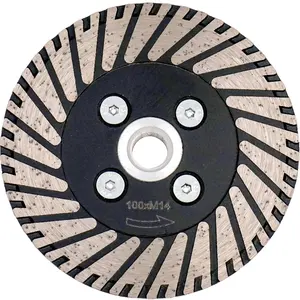
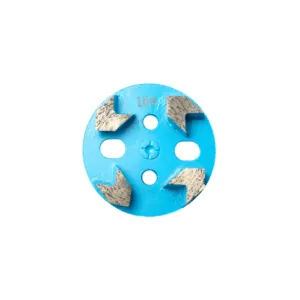






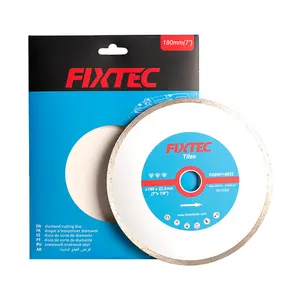

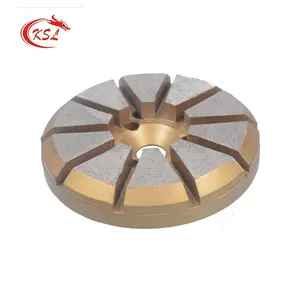

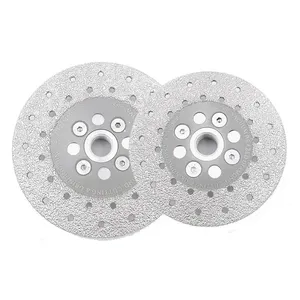
























 浙公网安备 33010002000092号
浙公网安备 33010002000092号 浙B2-20120091-4
浙B2-20120091-4